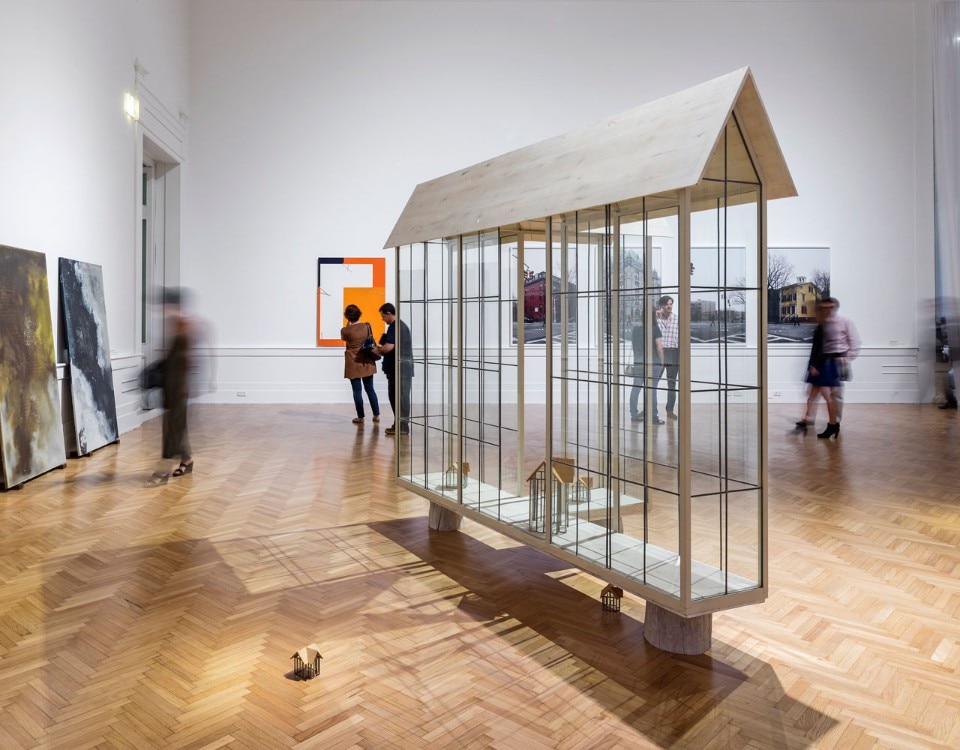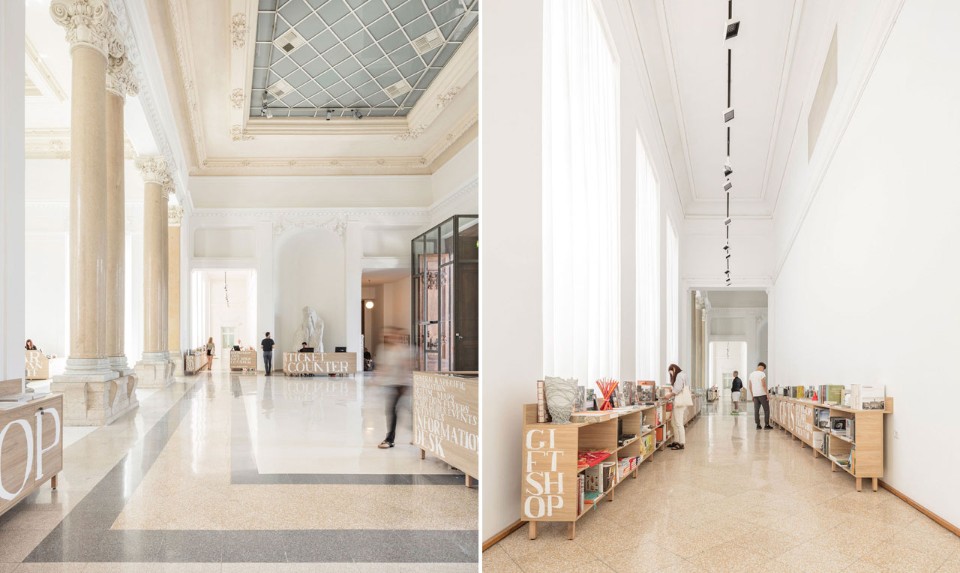
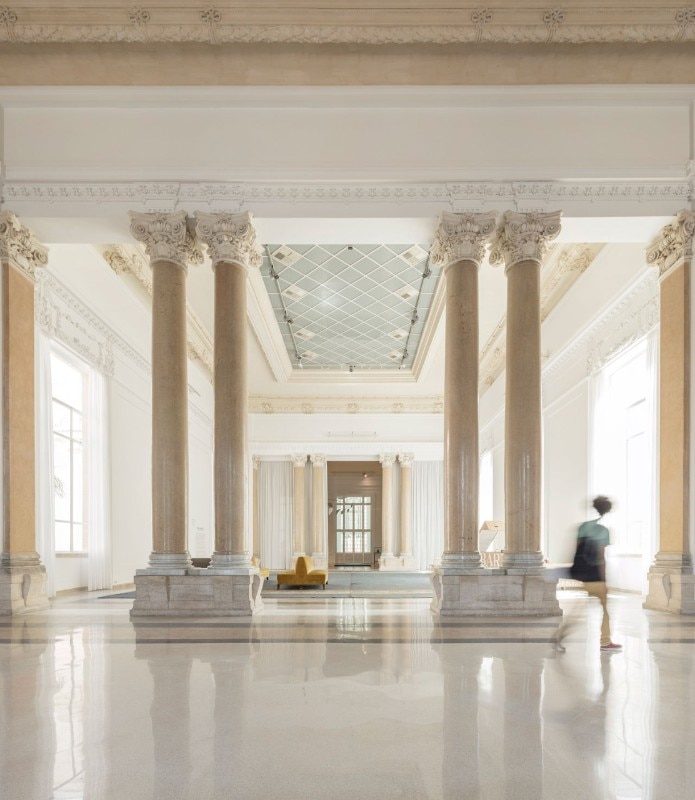
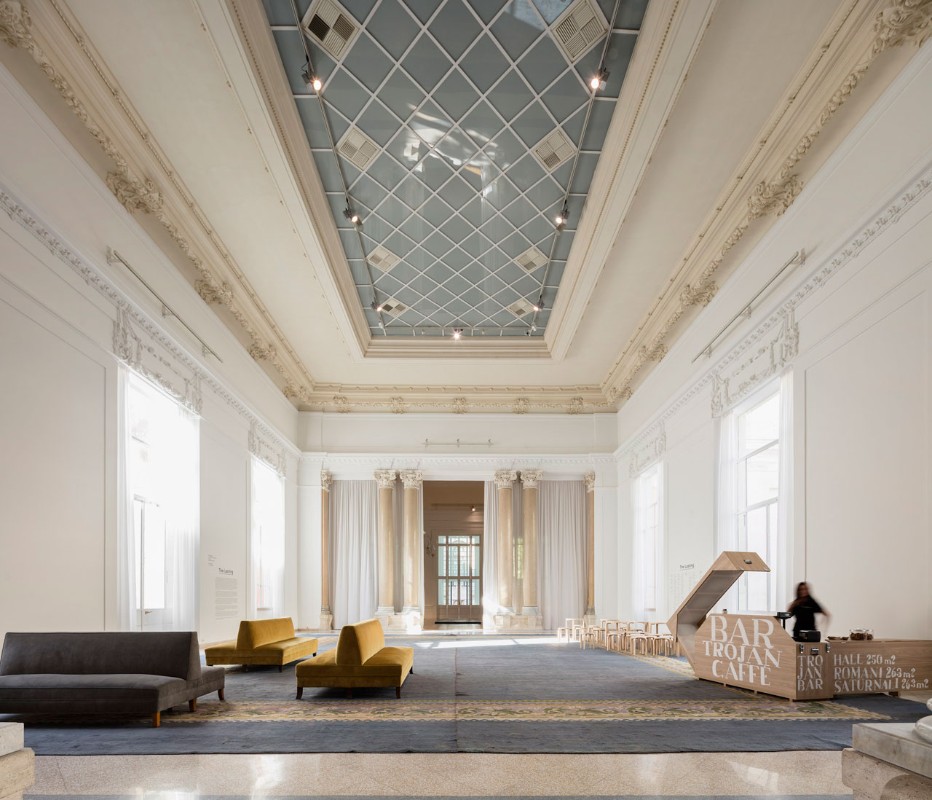
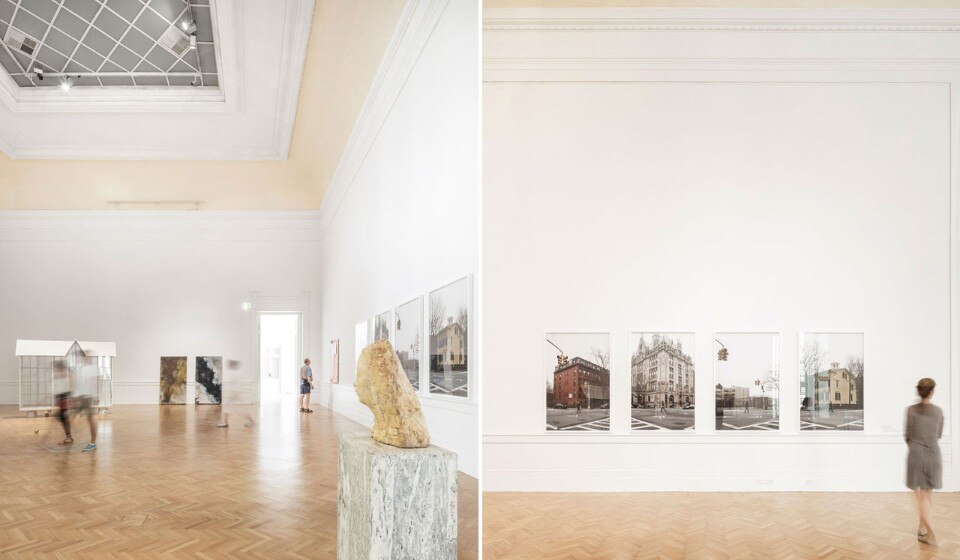
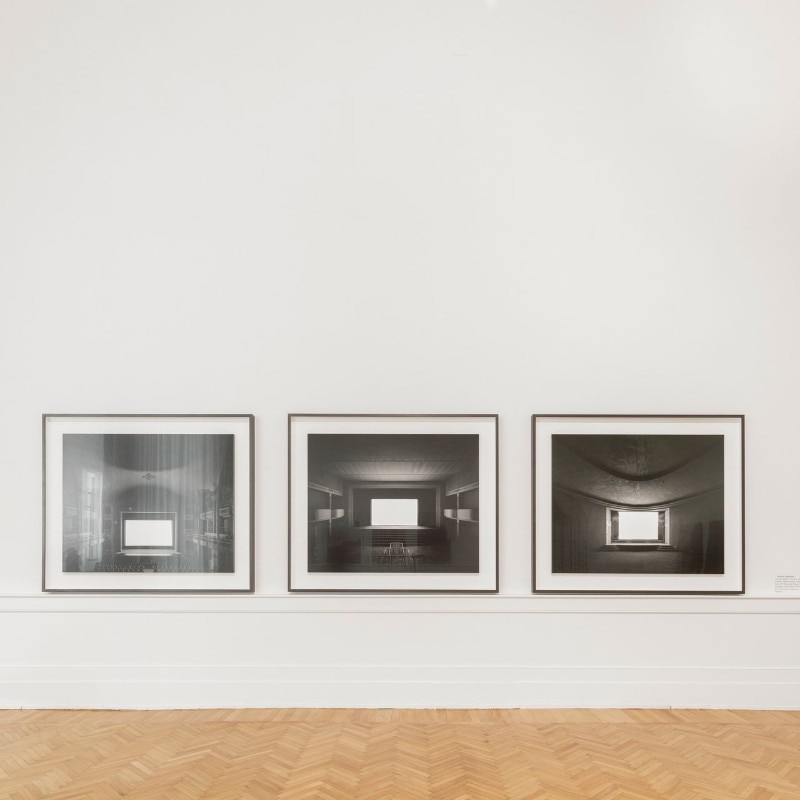
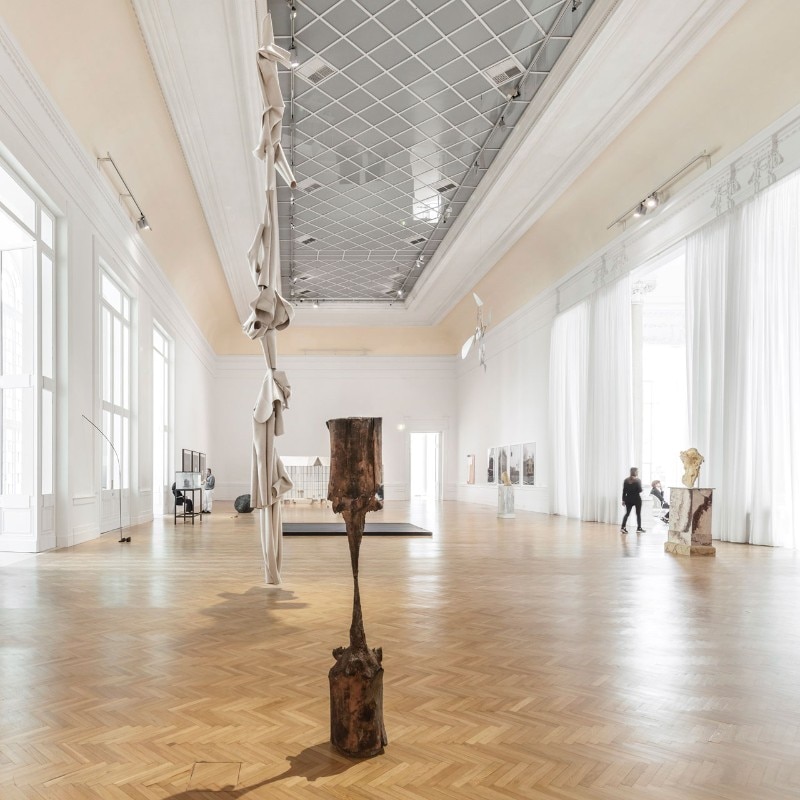
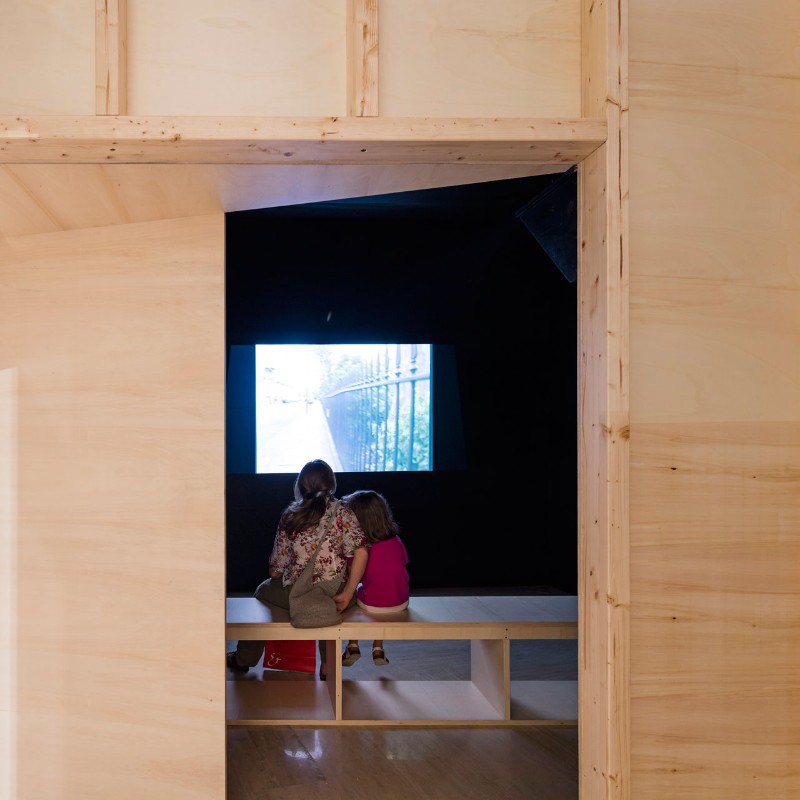
Then there is Clessidra by Giorgio Andreotta Calò, an artist from the Veneto region. To make it, he took used wooden bricole, Venetian mooring poles eroded by the tides. Here he has chosen one that has been consumed to the breaking point. He made a mould of it and cast it in bronze, then replicated it and united two of them to form the shape of an hourglass. “The idea stems from the real effect created in canals when the water is flat and the pole is reflected as in a mirror. The element of positive-negative contained in the mould and the effect of the doubling make this the piece most obviously connected to the subject of time,” explains Cincinelli.
The young artist Giulia Cenci works with ephemeral garden furniture, speeding up and helping along its decay. Her prematurely deteriorated objects look like they have had a long life. Other work by Cenci is silicone-covered fruit. Here, the natural element dries up, leaving an air chamber between the original fruit and the shrivelled shape, becoming a modern memento mori.
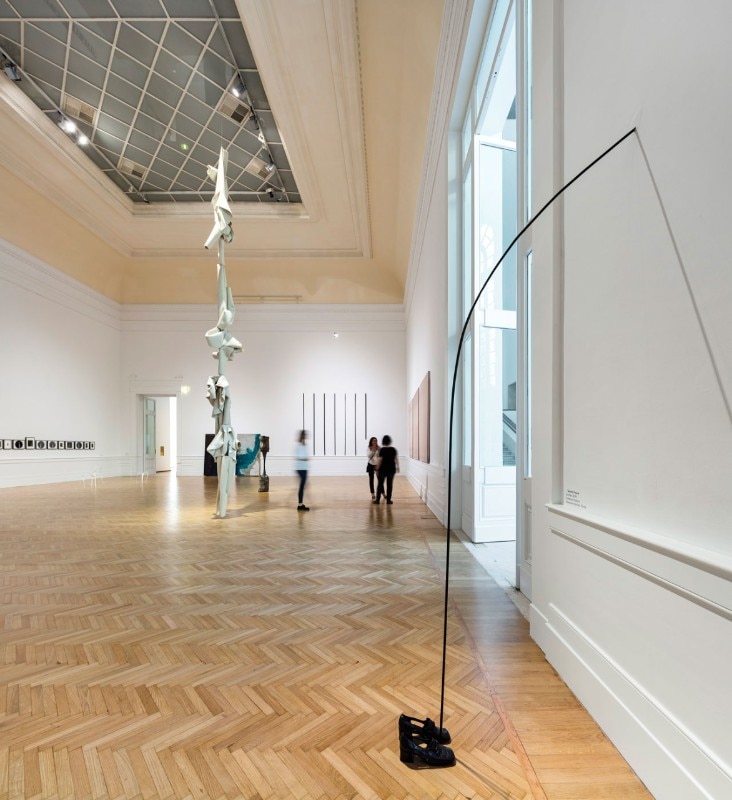
The photograph series by Franco Vimercati, a friend of Ugo Mulas and Enrico Castellani, is impressive. Vimercati worked as a painter in Milan in the same years as they did, and then broke off his official practice to undertake a sort of semi-secret activity, obsessively taking photos of the same objects, elementary shapes found around the house: a pitcher, a fruit bowl, a bouquet of dried flowers. He turned the making of the pictures into an extremely long process. “We could consider Vimercati the Giorgio Morandi of photography. I included his work for its almost compulsive duration of the object, conceived as an act to be repeated over and over,” Cincinelli says.
The idea that Father Time is a great painter lies at the base of the decision to include Antonio Fiorentino in the show. He takes sheets of zinc and immerses them in a solution of lead and vinegar water. When the blank zinc comes into contact with the solution, it produces a kind of continuous bloom that develops very slowly, triggering a chemical process – one that Renaissance alchemists used in their attempts to turn lead into gold.
“It’s the idea of a changing landscape whose mutation process cannot be seen with the naked eye. Seemingly, everything is static, while in reality everything is in motion. We could call it an effect of fixity. It is like what the French semiotician Algirdas Julien Greimas called silent transformations,” offers Cincinelli.
Also Emanuele Becheri (1973) works with natural elements. His most famous work uses spiderwebs. He traps the delicate weave with adhesive paper and removes it in a way similar to the strappo technique used for frescoes. The result is a photograph made without a camera, an X-ray made by contact with the object.
until 29.01.2017
The Lasting. L’intervallo e la durata
La Galleria Nazionale


